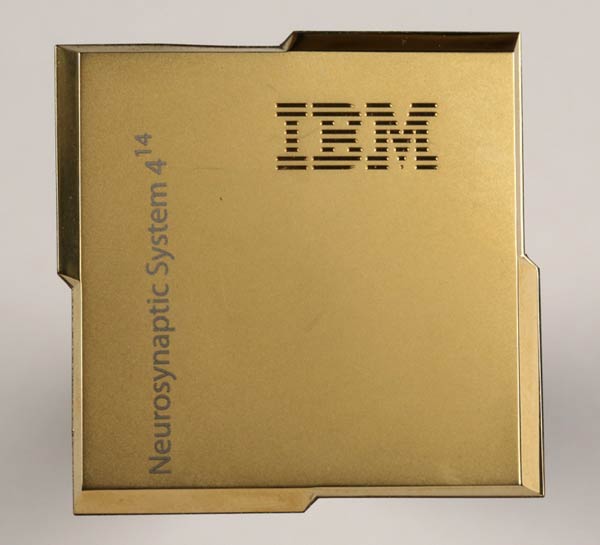A new microchip inspired by the structure of the human brain has been developed by researchers at International Business Machines Corp (IBM). The pioneering computing firm claims the chip is able to simulate the functions of neurons, synapses, and other features of an organic brain.
Big Blue has detailed, in an article published in the journal Science, its efforts to mimic how the brain recognises patterns, with built-in interconnected web-like structures of transistors that are similar to the brain's neural networks. The size of a postage stamp, the microchip has the capability to process large amounts of data while handing inputs from several different sources, reports Reuters.
Although the chip's architecture is based on the complex organic brains, it is highly simplified. The small amount of electricity required to run the chip, around 63mW, equivalent to a hearing aid's consumption, is only one of its many advantages. The chip can process complex data in real-time, and is also said to be capable of dealing with ambiguity and excels at tasks such as classifying objects.

IBM says the chip, dubbed TrueNorth, is a sharp break from the fundamental design used in traditional computers, which usually operates along pre-written paths. The chip can be daisy-chained to make large systems, and is a result of nearly a decade of research, which has received $53 million in funding from the Defence Advanced Research Project Agency (DARPA) so far.
TrueNorth contains "5.4 billion transistors with 4096 neurosynaptic cores which is interconnected via an intrachip network that integrates 1 million programmable spiking neurons and 256 million configurable synapses." In comparison, processors in today's PCs and data centres may typically have around 1.4 billion transistors and use much more power, as HEXUS readers will know.
"In 2011, we had a chip with one core," Dr. Dharmendra S. Modha, founder of IBM's Cognitive Computing group at IBM research, told Forbes in an interview. "We have now scaled that to 4096 cores, while shrinking each core 15x by area and 100x by power."
The chip's AI processing capability was demonstrated using a video camera on top of a building which picked out and tracked people walking below. The company also hopes to develop smaller and simpler chips for applications where space is critical or for use in places which are hard to reach by humans.
Potential applications of TrueNorth described by IBM include rolling ball-shaped robots with cameras to inspect disaster sites and leaf-sized sensing devices which could be scattered during a forest fire. "It's not going to replace conventional computers," Modha explained. "It is a complementary relationship."
Last month we heard about IBM's $3 billion plans to push R&D into new chip materials and design methodologies.













